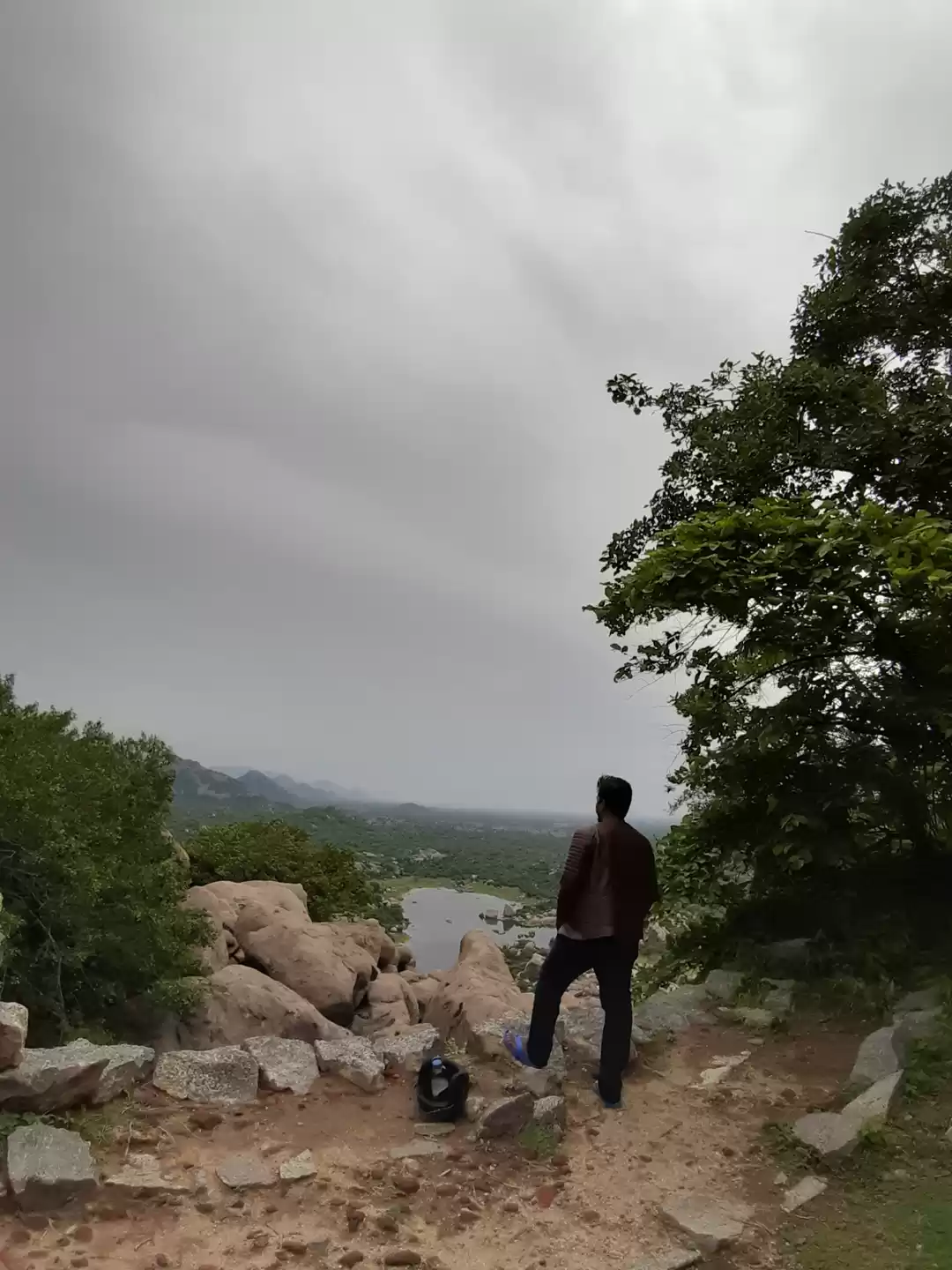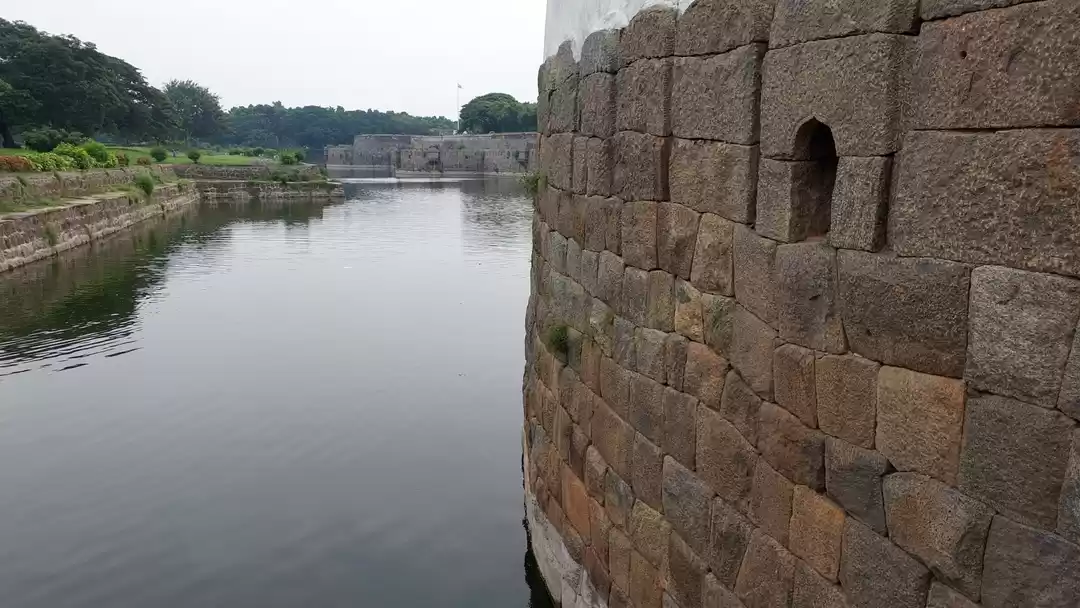Vellore Fort is one of the most impressive and well-preserved forts in India, located in the city of Vellore in Tamil Nadu. Built in the 16th century by the Vijayanagara Empire, the fort has witnessed many battles and events that shaped the history of South India. The fort is also home to several attractions, such as the Jalakandeswarar Temple, the St. John’s Church, the Archaeological Survey of India Museum, and the Tipu Mahal and Hyder Mahal. Whether you are a history buff, a culture lover, or a nature enthusiast, Vellore Fort has something for everyone. In this article, we will explore the history, attractions, and tourism aspect of Vellore Fort, and provide you with some useful travel tips and recommendations.

History of the Vellore Fort
Vellore Fort is a marvel of military architecture, built with granite blocks and surrounded by a deep moat. The fort covers an area of about 133 acres and has four massive gateways. The fort was constructed by the Vijayanagara kings, who ruled over most of South India from the 14th to the 17th century. The fort was later captured by various dynasties, such as the Bahmani Sultanate, the Bijapur Sultanate, the Marathas, the Mughals, the Carnatic Nawabs, the British, and the French.
The fort has witnessed many significant battles and events in the history of South India, such as:
The Battle of Talikota in 1565, where the Vijayanagara Empire suffered a crushing defeat by the Deccan Sultanates, leading to its decline and eventual collapse.
The Siege of Vellore in 1602, where the Bijapur Sultanate laid a prolonged siege to the fort, but failed to capture it due to the resistance of the Vijayanagara governor.
The Vellore Mutiny in 1806, where the Indian sepoys of the British East India Company revolted against the new dress code imposed by the British, which they considered as an insult to their religious and cultural sentiments. The mutiny was suppressed by the British, but it is considered as one of the earliest expressions of Indian nationalism and resistance to colonial rule.
The Vellore Conspiracy in 1911, where a group of Indian nationalists, led by V.O. Chidambaram Pillai and Subramania Bharati, plotted to overthrow the British rule by collaborating with the German Kaiser during the First World War. The conspiracy was exposed by the British, and the leaders were arrested and imprisoned.
These are just some of the fascinating facts and stories about the history of Vellore Fort. You can learn more about the fort’s history by visiting the Archaeological Survey of India Museum, which displays various artefacts, weapons, paintings, and sculptures related to the fort and its rulers.
Attractions Inside the Vellore Fort
Vellore Fort is not only a historical monument, but also a cultural and religious hub. The fort houses several attractions, each with its own history, features, and significance. Here are some of the attractions that you should not miss when you visit the fort:
Jalakandeswarar Temple
Jalakandeswarar Temple is a Hindu temple dedicated to Lord Shiva, located inside the fort. The temple is famous for its exquisite sculptures and carvings, depicting various scenes from Hindu mythology and legends. The temple was built by the Vijayanagara kings, who were ardent devotees of Lord Shiva. The temple was later desecrated by the Bijapur Sultanate, who converted it into a granary. The temple was restored by the Marathas, who also added a gopuram (tower) to the temple. The temple is open from 6:30 am to 12:30 pm and from 4:00 pm to 8:30 pm. The entry fee is Rs. 5 per person.
St. John’s Church
St. John’s Church is a Christian church, located inside the fort. The church was built by the British in 1846, in memory of the victims of the Vellore Mutiny. The church is a fine example of Gothic architecture, with stained glass windows, vaulted ceilings, and a spire. The church also contains a cemetery, where many British officers and soldiers are buried. The church is open from 8:00 am to 6:00 pm. The entry is free.
Archaeological Survey of India Museum
Archaeological Survey of India Museum is a museum, located inside the fort. The museum was established in 1985, to showcase the various artefacts, weapons, paintings, and sculptures related to the fort and its rulers. The museum has four galleries, each displaying a different aspect of the fort’s history and culture. The museum is open from 9:00 am to 5:00 pm, except on Fridays. The entry fee is Rs. 10 per person.
Tipu Mahal and Hyder Mahal
Tipu Mahal and Hyder Mahal are two palaces, located inside the fort. The palaces were built by the Mughal emperor Aurangzeb, who gifted them to the Carnatic Nawab Zulfiqar Ali Khan. The palaces were later occupied by Hyder Ali and Tipu Sultan, the father and son duo who ruled over Mysore and fought against the British. The palaces are now in a dilapidated condition, but they still retain some of their original charm and elegance. The palaces are open from 9:00 am to 5:00 pm. The entry fee is Rs. 10 per person.
Tourism Aspect of the Vellore Fort
Vellore Fort is a popular tourist destination, attracting thousands of visitors every year. If you are planning to visit the fort, here are some useful tips and recommendations to make your trip more enjoyable and memorable:
Best Time to Visit
The best time to visit Vellore Fort is from October to March, when the weather is pleasant and cool. The summer months from April to June are very hot and humid, and the monsoon months from July to September are rainy and wet. Avoid visiting the fort during these seasons, as you may not be able to explore the fort comfortably and fully.
Nearby Attractions
Vellore Fort is not the only attraction in Vellore. There are many other places to visit in and around the city, such as:
The Sripuram Golden Temple, a Hindu temple dedicated to Goddess Lakshmi, located about 12 km from the fort. The temple is famous for its gold-plated exterior, which glitters in the sunlight. The temple is open from 4:00 am to 8:00 pm. The entry is free.
The Periyar Park, a public park located about 3 km from the fort. The park is a great place to relax and enjoy the greenery and nature. The park has a lake, a fountain, a children’s play area, and a boating facility. The park is open from 6:00 am to 8:00 pm. The entry is free.
The Virinjipuram Temple, a Hindu temple dedicated to Lord Shiva, located about 15 km from the fort. The temple is famous for its ancient and intricate architecture, dating back to the 9th century. The temple is open from 6:00 am to 12:00 pm and from 4:00 pm to 8:00 pm. The entry is free.
Accommodation Options
Vellore Fort is located in the heart of the city, and there are many accommodation options available nearby, ranging from budget to luxury. Some of the best hotels near the fort are:
Regency Sameera by GRT Hotels, a 4-star hotel located about 2 km from the fort. The hotel offers spacious and comfortable rooms, with amenities such as air-conditioning, Wi-Fi, TV, and minibar. The hotel also has a restaurant, a bar, a gym, and a spa. The room rates start from Rs. 3,000 per night.
Khanna Fiesta by GRT Hotels, a 3-star hotel located about 3 km from the fort. The hotel offers cozy and elegant rooms, with amenities such as air-conditioning, Wi-Fi, TV, and tea/coffee maker. The hotel also has a restaurant, a coffee shop, and a banquet hall. The room rates start from Rs. 2,000 per night.
Sri Srinivasar Residency, a 2-star hotel located about 1 km from the fort. The hotel offers simple and clean rooms, with amenities such as air-conditioning, Wi-Fi, TV, and hot water. The hotel also has a restaurant and a travel desk. The room rates start from Rs. 1,000 per night.
Travel Tips
Here are some travel tips to help you make the most of your visit to Vellore Fort:
- Wear comfortable clothes and shoes, as you will have to walk a lot inside the fort.
- Carry a water bottle and some snacks, as there are no food stalls or vendors inside the fort.
- Respect the rules and regulations of the fort, such as not littering, not smoking, not taking photos in restricted areas, and not disturbing the peace and sanctity of the place.
- Hire a guide or an audio guide, if available, to learn more about the history and culture of the fort and its attractions.
- Plan your visit in advance, as the fort can get crowded during weekends and holidays.
Conclusion
Vellore Fort is a historical and cultural treasure in Tamil Nadu, that offers a glimpse into the glorious past and heritage of South India. The fort is a must-visit for anyone who loves history, architecture, and culture. The fort also has many attractions, such as the Jalakandeswarar Temple, the St. John’s Church, the Archaeological Survey of India Museum, and the Tipu Mahal and Hyder Mahal, that showcase the diversity and richness of the fort’s history and culture. The fort is also a great place to enjoy the natural beauty and scenery of Vellore.
If you are looking for a memorable and enriching experience, Vellore Fort is the perfect destination for you.







































